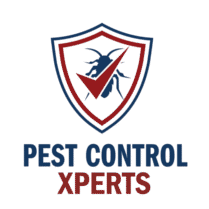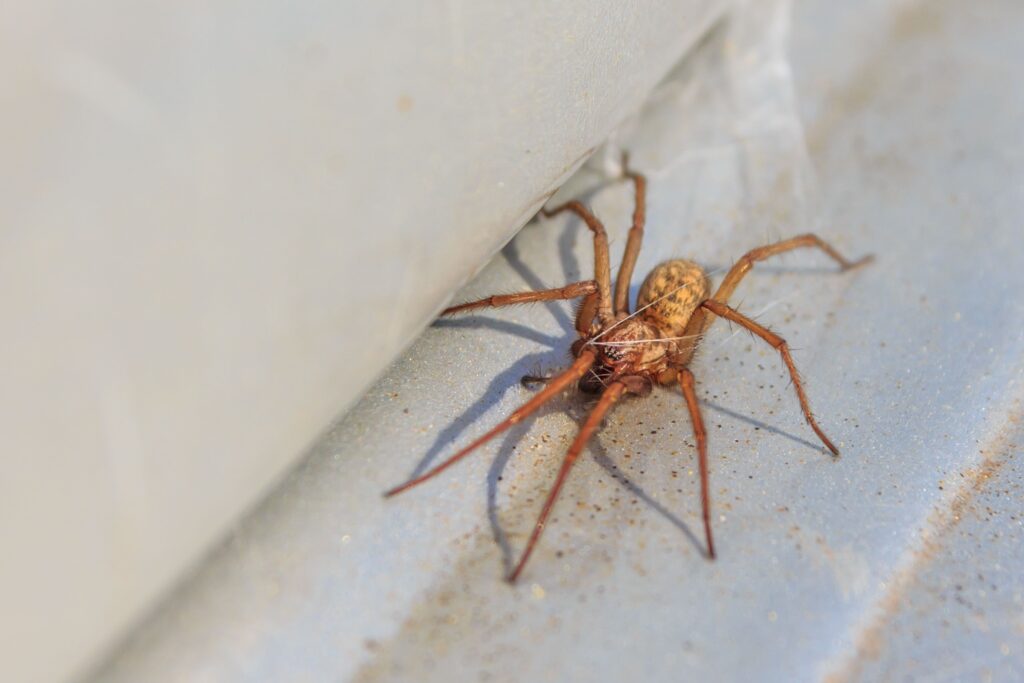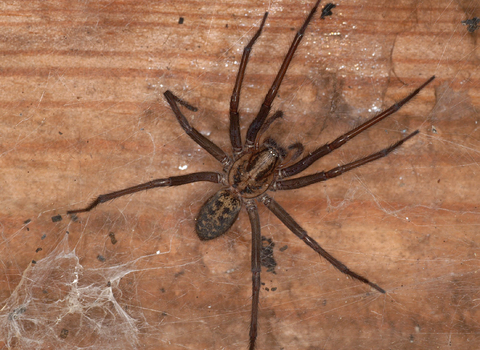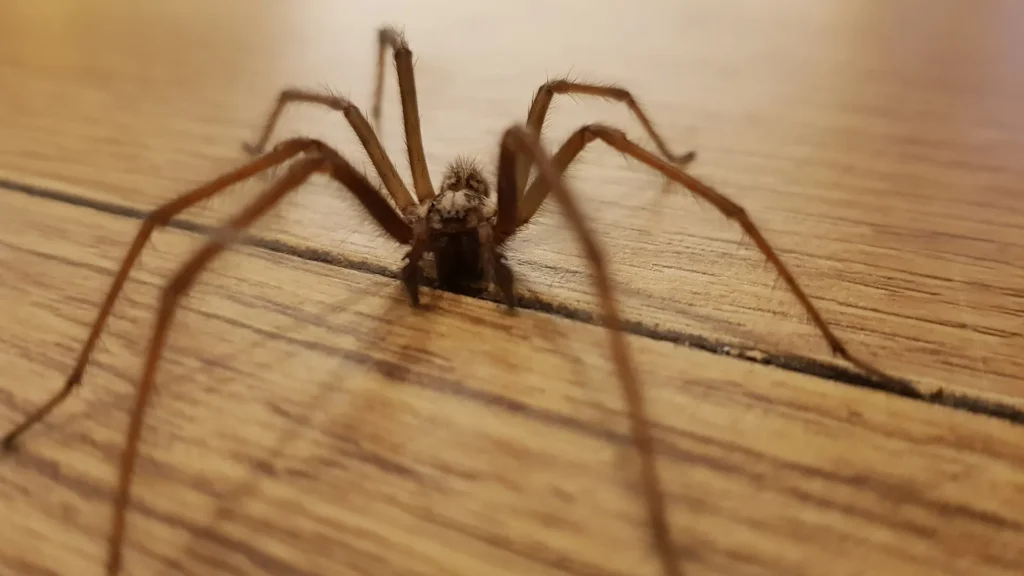Spider Removal Services by Pest Control Xperts in Olivehurst
Serving homes, apartments, dormitories, hotels, and healthcare offices throughout Olivehurst, Wheatland, Sheridan, California, and Surrounding Areas
Spider Control & Extermination in Olivehurst, Wheatland, Sheridan California
Are you battling a relentless spider problem in your Olivehurst, Wheatland, or Sheridan home? Do store-bought sprays offer only fleeting relief, leaving you frustrated as these eight-legged invaders return with unsettling regularity? You’re not alone. Many property owners experience the temporary illusion of control, only to find their DIY efforts undone by the hidden, thriving spider colony lurking just out of sight. At Olivehurstst Pest Control Experts, we understand that true spider elimination goes far beyond surface treatments. Our mission is to eradicate the problem at its source, targeting the queen and the nest, to deliver definitive, long-lasting spider control that restores peace and safety to your property.
Why Spiders Appear in Olivehurst, Wheatland, Sheridan and Surrounding Communities
The Sacramento Valley, with its unique blend of climate, geography, and urban development, provides an ideal habitat for a diverse range of spider species, driving them into homes and businesses across Olivehurst, Wheatland, and Sheridan. Understanding these local factors is crucial to effective spider control.
The influence of the Feather River floodplain dynamics is significant. The proximity to this major waterway creates areas of higher humidity and moisture, which are magnets for many insect species – the primary food source for spiders. As these insect populations thrive near the river, so too do the spiders that prey on them. This leads to increased spider activity in properties situated closer to the floodplain, as spiders follow their food source. Furthermore, the extensive agricultural irrigation systems throughout the Sacramento Valley contribute to localized moisture pockets. These consistently damp environments, often found around foundations, gardens, and crawl spaces, are particularly attractive to moisture-loving spiders like carpenter spiders, which seek out decaying wood and damp areas for harborage and nesting. The flood control systems, while essential for the region, can also inadvertently create sheltered, humid microclimates that provide ideal conditions for various spider species to flourish.
The Sutter Buttes, often referred to as the “world’s smallest mountain range,” act as a natural refuge zone for wildlife, including numerous insect and spider species. As development expands around these natural areas, the interface between wild habitats and human structures becomes more pronounced. Spiders living in the Buttes can easily migrate into nearby residential and commercial properties, especially during seasonal shifts or when their natural food sources become scarce. This creates a constant influx of spiders from the wild, posing a persistent challenge for property owners in the surrounding communities.
The distinct transition from hot, dry summers to cold, foggy winters profoundly impacts spider behavior in Olivehurst, Wheatland, and Sheridan. During the scorching, arid summers, the intense heat and lack of moisture outdoors drive spiders indoors in search of cooler, more humid environments and reliable water sources. They exploit any crack, crevice, or opening to gain entry, seeking refuge in basements, bathrooms, and kitchens. As autumn arrives and temperatures drop, giving way to cold, foggy winters, spiders again seek shelter, but this time for warmth and insulation. They move deeper into wall voids, attics, and cluttered areas, often becoming more noticeable as they search for stable overwintering sites. This seasonal migration means that properties are under constant threat, requiring year-round vigilance and tailored pest management strategies.
Architectural and urban factors further exacerbate spider problems. New tract housing developments, while seemingly modern, can present unique vulnerabilities. Rapid construction often leaves small gaps, unsealed utility entry points, and imperfectly fitted windows and doors, creating numerous access points for spiders. These newer homes may also have less mature landscaping, which can provide less natural predation for insects, leading to higher insect populations that, in turn, attract spiders. In contrast, older homes in the historic centers of Olivehurst, Wheatland, and Sheridan, with their settling foundations, aging window frames, and more extensive basements and attics, offer abundant entry points and harborage areas. These older structures often have more complex plumbing and electrical systems, creating intricate pathways for spiders to navigate throughout the property. Specific species like odorous house spiders and pharaoh spiders are particularly adept at exploiting these structural differences, establishing satellite colonies in hidden voids and spreading rapidly.
The transportation of goods plays a subtle yet significant role in the spread of pervasive spiders. Commercial trucks, shipping containers, and even personal vehicles traveling through the region can inadvertently transport spiders from one location to another. Spiders can hitchhike on goods, pallets, and even within the vehicles themselves, introducing new species or re-infesting areas where populations had been controlled. This constant movement of goods means that even properties with robust exclusion measures can face new spider challenges, highlighting the need for ongoing monitoring and adaptable pest control strategies.
In summary, the confluence of the Sacramento Valley’s climate, the Feather River’s influence, the Sutter Buttes’ natural refuge, the distinct seasonal shifts, varying architectural vulnerabilities, and the movement of goods all contribute to the persistent and complex spider challenges faced by residents and businesses in Olivehurst, Wheatland, and Sheridan. A deep understanding of these local dynamics is the cornerstone of effective, long-term spider control.
Understanding the Enemy: Local Spider Species and Their Unique Threats
To effectively combat a spider infestation, it’s essential to identify the specific species you’re dealing with. Here are some of the common spiders found in Olivehurst, Wheatland, and Sheridan, along with their characteristics and the threats they pose:
- Carpenter Spiders: These spiders are often mistaken for ants due to their similar appearance and habit of nesting in wood. They are typically dark-bodied, ranging from black to dark brown. Carpenter spiders don’t actually eat wood, but they excavate galleries within it to create nests, often in damp or decaying timber. This activity can weaken structural integrity over time, making them a significant threat to homes and businesses. Look for piles of sawdust-like material, known as frass, near wooden structures as a key sign of their presence.
- Pavement Spiders: Small, dark brown or black spiders, pavement spiders are commonly found outdoors under rocks, logs, and debris. They often enter homes through cracks in foundations, around windows, and under doors, especially during colder weather or prolonged dry spells. While generally harmless, large numbers can be a nuisance, and their webs can accumulate quickly, creating an unsightly mess.
- Odorous House Spiders: These small, dark brown or black spiders are named for the unpleasant odor they emit when crushed. They are frequently found indoors, particularly in kitchens and bathrooms, seeking moisture and food. Odorous house spiders are known for creating messy, irregular webs in corners and under objects. They can quickly establish satellite colonies, leading to a rapid increase in their population if not addressed promptly.
- Pharaoh Spiders: While often associated with ants, the term “pharaoh spider” is sometimes used colloquially to describe small, light-colored spiders that infest homes. These spiders are highly adaptable and can be found in various indoor environments, often near food sources. They are known for their ability to spread rapidly through a process called “budding,” where small groups of spiders break off to form new colonies, making them particularly challenging to eliminate without professional intervention.
- Fire Spiders: This term can refer to several species, but generally describes spiders with reddish or orange markings. They may be found both indoors and outdoors, often in sheltered areas. The specific threat depends on the exact species, but some fire spiders can deliver a painful bite if provoked.
- Argentine Spiders: These tiny, dark brown spiders are known for their massive colonies and extensive, sheet-like webs. They are highly invasive and can quickly take over large areas, both indoors and outdoors. Argentine spiders are a significant nuisance pest, and their sheer numbers can be overwhelming, contaminating food and surfaces.
- Thief Spiders: Small, secretive spiders, thief spiders are often found in dark, undisturbed areas like basements, crawl spaces, and wall voids. They are known for their ability to steal food from other spider webs. While not considered dangerous, their presence indicates a broader insect population that is attracting them.
Problems Spiders Create for Homes and Businesses
An unchecked spider infestation can lead to a multitude of problems for both residential and commercial properties:
- Food Contamination: Spiders, especially those that frequent kitchens and pantries, can contaminate food and food preparation surfaces with their droppings, webbing, and shed skins. This is a particular concern for businesses in the food service industry, where hygiene is paramount.
- Property Damage: While not all spiders cause structural damage, species like carpenter spiders can excavate wood, weakening beams, floors, and other wooden elements over time. Their activity can compromise the integrity of your property, leading to costly repairs.
- Brand Reputation Risk: For businesses, the presence of spiders can severely damage brand reputation. Customers and clients are unlikely to return to establishments that appear unkempt or infested, leading to lost revenue and negative reviews.
- Health Risks: While most spiders in our region are not highly venomous, their bites can still be painful and cause localized reactions. For individuals with allergies or compromised immune systems, a spider bite can lead to more severe complications. The presence of spiders can also trigger arachnophobia, creating an uncomfortable and anxiety-inducing environment for occupants.
Signs of an Escalating Spider Infestation: When to Call the Experts
Recognizing the early signs of a spider infestation can help prevent it from escalating. Here are key indicators that it’s time to contact professional spider control experts:
- Increased Sightings: A sudden or consistent increase in the number of spiders you see, particularly in different areas of your home or business, is a strong indicator of a growing problem.
- Extensive Webbing: While some webbing is normal, an abundance of webs, especially in undisturbed areas, corners, and along baseboards, suggests a thriving spider population. Look for webs that are constantly being repaired or rebuilt.
- Spider Trails: These are not visible trails like those left by ants, but rather pathways spiders frequently use, often indicated by a higher concentration of webbing or droppings in specific areas.
- Frass: For carpenter spiders, the presence of frass (fine sawdust-like material) near wooden structures is a definitive sign of their activity.
- Spider Nests or Egg Sacs: Finding small, silken sacs, often attached to webs or hidden in secluded areas, indicates that spiders are breeding within your property, leading to a rapid increase in population.
- Satellite Colonies: Some spider species, like odorous house spiders, will form smaller, secondary colonies away from the main nest. Discovering these indicates a widespread infestation.
Why Professional Extermination is Essential for Spider Removal
Many property owners attempt to tackle spider problems with store-bought sprays and traps, only to find their efforts are temporary illusions undone by the underlying issue. Here’s why professional extermination is the only definitive solution:
- DIY Methods Only Address Surface Problems: Over-the-counter sprays and traps primarily target visible spiders, leaving the hidden colony, the queen, and their nests untouched. This means that while you might eliminate a few individual spiders, the core of the infestation remains, allowing new spiders to emerge and the problem to persist.
- Misidentification Leads to Ineffective Treatment: Different spider species require different treatment approaches. Without expert knowledge, you might misidentify the type of spider, leading to the application of ineffective products or methods.
- Limited Reach: Spiders often hide in inaccessible areas like wall voids, attics, crawl spaces, and deep within cracks and crevices. DIY products simply cannot reach these hidden harborage sites, allowing the infestation to continue undisturbed.
- Resistance and Adaptation: Spiders can develop resistance to certain pesticides over time, making repeated DIY attempts less effective. Professional exterminators use a variety of advanced products and techniques to overcome this challenge.
- Safety Concerns: Improper use of pesticides can pose risks to your family, pets, and the environment. Professional technicians are trained in the safe and effective application of pest control products, minimizing any potential hazards.
- Colony Elimination is Key: The ultimate goal of effective spider control is colony elimination. This means targeting the queen and the nests to prevent future generations from emerging. DIY methods rarely achieve this comprehensive level of control.
Advanced Spider Exclusion Methods and Structural Pest Control
After the initial eradication phase, implementing robust spider exclusion methods and structural pest control is paramount to preventing future infestations. Our approach focuses on creating a long-term barrier against spiders:
- Sealing Entry Points: We meticulously inspect your property to identify and seal all potential entry points, including cracks in foundations, gaps around windows and doors, utility line openings, and vents. This physical barrier prevents spiders from gaining access to your home or business.
- Managing Moisture: Many spider species, particularly carpenter spiders, are attracted to moisture. We provide recommendations and solutions for moisture control, such as repairing leaky pipes, improving ventilation in basements and crawl spaces, and ensuring proper drainage around your foundation. Reducing moisture removes a key attractant for spiders and their prey.
- Perimeter Defense: We apply targeted treatments to the exterior perimeter of your property, creating a protective barrier that deters spiders from approaching and entering. This includes treating foundations, eaves, window frames, and door thresholds.
- Crack and Crevice Treatment: For existing structural vulnerabilities, we utilize specialized crack and crevice treatments to eliminate any spiders or their eggs hiding within these tight spaces, preventing them from emerging indoors.
- Spider Barriers: We can implement various spider barriers, both physical and chemical, around your property to further enhance protection and discourage spider activity.
- Foundation Sealing: A critical component of structural pest control, foundation sealing addresses any gaps or vulnerabilities in your foundation that could serve as entry points for spiders and other pests.
Our Spider Removal Method: A Step-by-Step IPM Approach
At [CaOlivehurststaic] Pest Control Experts, we employ a comprehensive Integrated Pest Management (IPM) approach to spider control, ensuring effective and sustainable results:
- Consultation & Inspection: Our process begins with a thorough consultation and detailed inspection of your property. We identify the spider species present, locate harborage areas, assess the severity of the infestation, and pinpoint potential entry points and contributing factors.
- Customized Treatment: Based on our findings, we develop a customized treatment plan tailored to your specific needs. This may include targeted spider baiting systems, residual treatments, and direct nest elimination techniques. We focus on eliminating the existing population and disrupting their breeding cycle.
- Exclusion & Maintenance: Following the initial treatment, we implement advanced exclusion techniques to seal entry points and prevent future infestations. We also provide recommendations for ongoing maintenance and preventative measures to keep spiders out.
- Monitoring: We believe in continuous monitoring to ensure the long-term effectiveness of our services. We schedule follow-up visits to assess the situation, address any new activity, and make adjustments to the treatment plan as needed.
Our IPM approach emphasizes a combination of methods to achieve lasting spider control while minimizing environmental impact and ensuring the safety of your family and pets.
Tailored Commercial Spider Services
Businesses in Olivehurst, Wheatland, and Sheridan face unique challenges when it comes to spider control. A spider infestation can not only damage your reputation but also pose health risks to employees and customers. [CaOlivehurststaic] Pest Control Experts offers tailored commercial spider services designed to meet the specific needs of various industries:
- Discrete Service: We understand the importance of maintaining a professional appearance. Our technicians provide discrete service, working efficiently and with minimal disruption to your business operations.
- HACCP Compliance: For businesses in the food industry, we adhere to strict HACCP (Hazard Analysis and Critical Control Points) protocols, ensuring our pest control methods meet the highest standards of food safety and hygiene.
- Customized Plans: We develop customized spider control plans that consider the specific environment of your business, the type of industry, and any regulatory requirements.
- Ongoing Monitoring & Reporting: Our commercial services include regular monitoring and detailed reporting, providing you with transparent insights into our pest management efforts and the effectiveness of the treatments.
Why Olivehurst, Wheatland, Sheridan Relies on Pest Control Experts for Definitive Spider Control
When it comes to spider control in Olivehurst, Wheatland, and Sheridan, property owners consistently choose [CaOlivehurststaic] Pest Control Experts for our unwavering commitment to definitive results. Here’s why we are the trusted authority:
- Regional Familiarity: We are deeply rooted in the Sacramento Valley and possess an unparalleled understanding of the local spider species, their behaviors, and the environmental factors that contribute to infestations in Olivehurst, Wheatland, and Sheridan. This hyper-local expertise allows us to develop highly effective, targeted treatment plans that other companies simply cannot match.
- Focus on Complete Colony Elimination: Unlike temporary DIY fixes, our core objective is the complete elimination of the spider colony. We don’t just treat the visible problem; we meticulously track down and eradicate the queen and the nest, ensuring that the infestation is resolved at its source for long-term relief.
- Experienced and Knowledgeable Technicians: Our team comprises highly trained and experienced pest control specialists who are experts in spider biology and control methods. They stay up-to-date with the latest industry advancements to provide you with the most effective and safest solutions.
- Advanced Technology and Techniques: We utilize cutting-edge spider baiting systems, advanced exclusion methods, and integrated pest management (IPM) principles to deliver superior results. Our technology allows us to pinpoint hidden colonies and apply precise treatments.
- Exceptional Customer Service: We pride ourselves on providing friendly, professional, and responsive customer service. From your initial consultation to follow-up visits, we are dedicated to ensuring your complete satisfaction and peace of mind.
- Long-Term Prevention Strategies: Our service extends beyond immediate eradication. We empower you with knowledge and implement robust exclusion and moisture control techniques to prevent future spider infestations, offering sustainable protection for your property.
The Value of Seasonal Spider Prevention
Given the distinct seasonal changes in the Olivehurst, Wheatland, and Sheridan area, seasonal spider prevention is crucial for maintaining a spider-free environment year-round. Our seasonal service adapts to the changing behaviors of spiders throughout the year:
- Spring Treatment: As temperatures rise, spiders become more active and begin to emerge from overwintering sites. Our spring treatment focuses on creating a strong perimeter defense to deter new activity and eliminate any emerging populations before they can establish themselves.
- Summer Treatment: The hot, dry summers drive spiders indoors in search of moisture and cooler temperatures. Our summer service targets entry points and interior harborage areas, preventing spiders from seeking refuge inside your home or business.
- Fall Treatment: As winter approaches, spiders seek warmth and shelter, often attempting to move indoors for overwintering. Our fall treatment focuses on reinforcing exterior barriers and addressing any potential entry points to prevent spiders from entering your property for the colder months.
By implementing a seasonal prevention plan, you can proactively protect your property from the cyclical nature of spider infestations, ensuring continuous peace of mind.
Don’t let a spider infestation dictate the comfort and safety of your property. The endless cycle of DIY treatments and recurring spider sightings is a frustrating illusion. It’s time to break free from the hidden colony and secure a definitive solution. Contact us for an immediate consultation and let Olivehurststaic Pest Control Experts provide the lasting spider control you deserve. Call us today!
We proudly serve Olivehurst, Wheatland, Sheridan, and surrounding communities. Our service area includes zip codes: [List of all relevant zip codes in Olivehurst, Wheatland, Sheridan, and surrounding communities].





